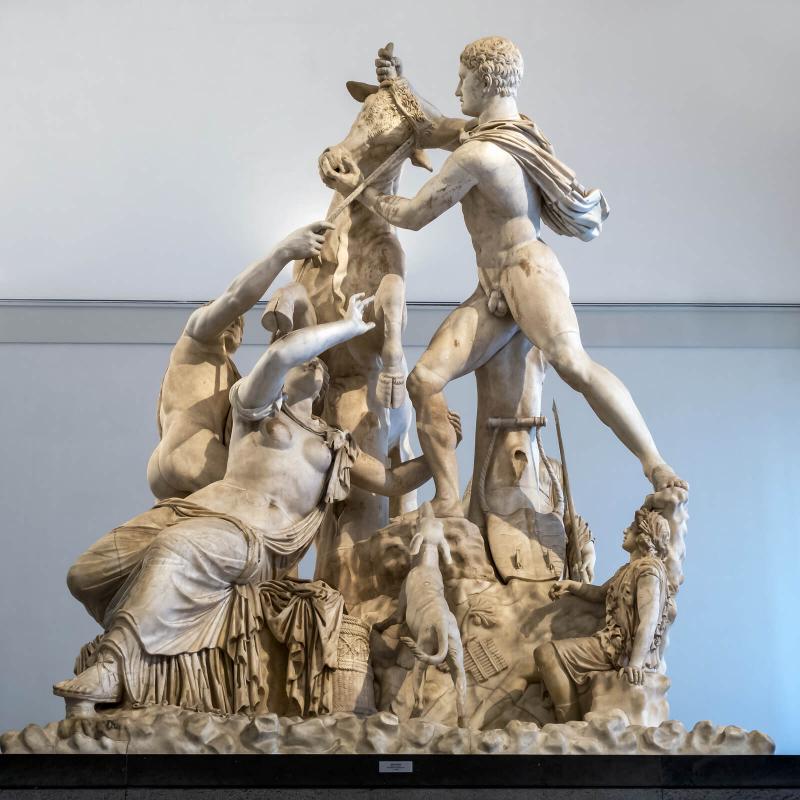[Pictured above: the Farnese Bull, the largest single sculpture recovered from antiquity, part of the museum's Farnese Collection.]
Italy’s most fascinating archeological museum? It has to be the Museo Archeologico Nazionale di Napoli (the National Archeological Museum of Naples, or MANN), which we picked as our featured museum of the month for the flurry of events and initiatives planned this year.
The MANN is considered one of the most important archeological museums in the world, and the most important when it comes to ancient Rome.
With its 250,000 works of art and objects covering five centuries of history over a 21,000-square-meter space, a visit to the MANN is a trip into the world of ancient civilizations. The museum indeed stands out for its impressive collection of Greek and Roman antiquities.
Its permanent collections are displayed according to two main themes: the Farnese Collection includes some of the most influential classical works, including the Farnese Cup, the Farnese Bull, the largest single sculpture recovered from antiquity so far, the Farnese Hercules, a massive marble statue of Hercules, and many others. The collection features Roman copies of classical Greek sculptures which had been lost, and also includes a number of engraved gems.
The second theme revolves around the Roman artifacts from nearby Pompeii, Stabiae and Herculaneum, and displays a major collection of ancient Roman bronzes from the Villa of the Papyri in Herculaneum, a number of important mosaics recovered from the ruins of Pompeii and other Vesuvian cities, and the Herculaneum Papyri, which were carbonized by the eruption of Mount Vesuvius, and recovered in the 18th century at the Villa of the Papyri. There is also an extensive collection of erotic and sexual items dug out from the ruins of Pompeii and Herculaneum.
“The MANN is growing. The next two years will see a rich schedule of exhibitions as well as the implementation of new services,” said recently Paolo Giulierini, the museum’s director, during the press conference where he presented the cultural programming for the years 2018-2019.
Kudos to that, and to the reopening of several sections, including the Egyptian section in 2016, the Epigraphs in 2017, the gardens, and, scheduled for the fall of 2018, the Prehistory and Magna Grecia sections.
Some of the exhibitions to watch out for in 2018 are: I Longobardi. Un popolo che cambia la storia (The Langobards. A population that changed history, currently on view, until March 25); Pompei e gli Etruschi (Pompeii and the Etruscans, June 19 – October 31), Pompei ed Ercolano. Visioni di una scoperta (Pompeii and Herculaneum. Visions of a discovery, June 29 – Sept. 30).
An exhibition dedicated to the weapons of gladiators (currently on view in several U.S. cities) is scheduled to open at Easter, as part of the project “Alla scoperta del MANN,” which, four times a year, plans to display restored works of art that are currently in the museum’s storage or on loan from international exhibitions.
Find more info at https://www.museoarcheologiconapoli.it/en/.








